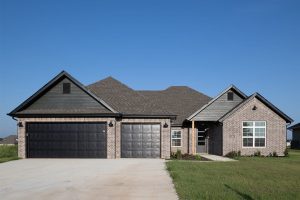Thin Brick vs Full Brick
When it comes to building or upgrading a home or commercial space, choosing the right materials is crucial. Brick remains a timeless architectural choice, adding warmth, charm, and durability to any project. However, a common debate persists: should you go with full brick or thin brick?
Understanding the differences between the two can help you make the best decision for your project’s budget, timeline, and structural needs.
What Is Thin Brick?
Thin brick is a lighter, thinner alternative to traditional full-sized brick. Made from the same materials — such as clay, shale, cement, or concrete — thin bricks are typically between ½ to 1 inch thick.
Their reduced size makes them highly versatile and easy to install on existing walls, making it possible to achieve the timeless look of brick without major structural changes. Common applications for thin brick include:
-
Interiors: Kitchen backsplashes, accent walls, decorative ceilings, fireplaces, and service counters
-
Exteriors: Enhancing columns, patios, or building facades
-
Flooring: Durable enough for entryways, lobbies, and other high-traffic areas
-
Landscaping: Walkways, staircases, sidewalks, and garden walls
What Is Full Brick?
Full brick, often referred to as traditional brick, measures about 3 ⅝ inches thick and has been used for centuries to create sturdy, load-bearing walls and structures.
Beyond structural use, full brick can also serve decorative purposes indoors, such as fireplaces, feature walls, or rustic accents.
Thin Brick vs Full Brick: Key Comparisons
Cost:
Thin brick generally costs less to install. While the material price per square foot is similar, full brick installation demands more time, skill, and labor, raising overall costs.
Installation:
Thin brick can be easily adhered to existing structures using adhesives or panels, requiring less technical expertise. Full brick installation involves traditional mortar methods, demanding skilled masons and longer installation times.
Weight and Structural Impact:
Thin brick is lightweight and purely aesthetic, making it ideal for renovations where structural reinforcement is not necessary. Full brick, being much heavier, can serve as an actual load-bearing component but often requires a foundation and additional support.
Durability:
Both thin and full bricks are made from the same durable materials, making them equally resistant to weather, fading, chipping, and general wear.
Aesthetic Appeal:
To the untrained eye, thin brick and full brick are visually identical once installed, offering the same timeless and sophisticated look.
Pros and Cons of Thin Brick
Pros:
-
Highly durable and resistant to rotting, insects, and fading
-
Wide range of colors and finishes for design flexibility
-
Eco-friendly, using significantly fewer raw materials
-
Energy-efficient, helping to increase wall insulation
-
Cost-effective with a strong return on investment
Cons:
-
Not suitable for structural support, as it serves only an aesthetic role
Pros and Cons of Full Brick
Pros:
-
Provides strong structural support for buildings
-
Exceptional longevity, often lasting centuries when maintained properly
Cons:
-
Higher installation and material costs
-
Poor insulation properties compared to modern materials
-
Complex and expensive repairs or renovations
Which Option Is Right for You?
Choosing between thin brick and full brick largely depends on the scope and purpose of your project.
If you are updating existing walls, working under tight budget or time constraints, or simply looking to refresh a space with the classic look of brick, thin brick is the perfect solution. It offers the beauty and durability of full brick without the need for heavy construction.
On the other hand, if you are building new load-bearing walls or constructing a brand-new home or commercial building where structural brick is a necessity, full brick may be the better choice.
In many cases, a smart hybrid approach is using thin brick as a beautiful finish over strong structural materials which can deliver the best of both worlds.
Bring Your Vision to Life with Thin Brick
Thin brick offers an ideal balance between classic beauty, modern convenience, and lasting value. It simplifies installation, reduces project costs, and delivers the timeless appeal that only real brick can provide. Whether you are revitalizing a cozy kitchen, designing a striking commercial entrance, or landscaping a charming walkway, thin brick can help you create a space that stands the test of time.

